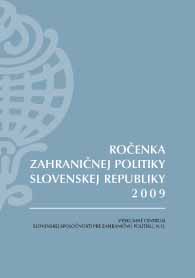Slovensko a Východné partnerstvo
Slovakia and the Eastern Partnership
Author(s): Juraj Marušiak
Subject(s): Politics, Geography, Regional studies, International relations/trade
Published by: Research Center of the Slovak Foreign Policy Association (RC SFPA)
Keywords: Slovakia; 2009; foreign policy; Eastern policy; Russia; bilateral relations;
Summary/Abstract: The very first time that the idea of Eastern Partnership came up at all was May 2008. At the time it was a joint initiative presented by Poland and Sweden. The project, which was outlined as the Eastern dimension of the European Neighborhood Policy (ENP) and which also included ambitions to exceed its original scope, was rendered possible thanks to the change in policy of France, which during her EU Presidency in 2008 sought, through the creation of the Union for the Mediterranean, to reinvigorate the so-called Southern dimension of the ENP. The Eastern Partnership (EaP) program also resulted from the pressure exerted by some of the new EU Member States, including in the first place the V4 countries and the Baltic States. These EU Member States referred to the need for a specific approach to the EU’s Eastern neighbors i.e. the states situated between the Eastern border of the EU and the Russian Federation. During her EU Presidency in the first half of 2007 Germany, just like the V4 countries, also adverted to the need to differentiate between ‘Europe’s neighbors’ and ‘the European neighbors’. This was reflected in the European Commission’s report of December 2006 on ‘strengthening the European Neighborhood Policy’, also referred to as the ENP Plus. The developments in Eastern Europe following the EU enlargements of 2004 and 2007 confirmed that it was necessary to pay more attention to the region and proved right the initiatives by state and non-state think tanks in Poland and later also those of the other V4 countries dealing with the need to implement the new so-called Eastern dimension of the EU. This position was also embraced by the Polish Ministry of Foreign Affairs, which in January 2003 presented a non-paper on the idea of ‘the EU Eastern dimension’. Developments following the EU enlargement by the Central and South Eastern European nations also confirmed the need to intensify contacts with the European states of the former USSR. Such intensification was not, however, possible under the ENP format adopted back in 2004, which involved a common institutional and agreement framework for the states of North Africa, the Near East and Eastern Europe.
Book: Ročenka zahraničnej politiky Slovenskej republiky 2009
- Page Range: 125-151
- Page Count: 27
- Publication Year: 2010
- Language: Slovak
- Content File-PDF

